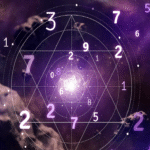This analysis explores the expansive influence of Guru (Brihaspati), or Jupiter, the ‘Great Benefic’ in Jyotish (Vedic Astrology). We examine the Guru Sign Meaning (equivalent to Jupiter Sign Meaning) through traditional scriptures, contemporary interpretations, the student’s learning curve, and practical applications. As the Graha governing wisdom (Jnana), knowledge, fortune, optimism, faith, children, and teachers, Guru’s placement and strength reveal our capacity for growth, abundance, and adherence to dharma. Understanding your natal Guru’s Rashi (Sidereal Sign), Bhava (House), and condition (Planetary Rulers Jupiter – Guru ruling Dhanus/Sagittarius & Meena/Pisces) illuminates your Astrology Growth Potential and Where You Find Luck Astrology within the Vedic framework.
LENS 1: Traditional Foundation (The Traditional Jyotishi’s View)
Key Findings: Traditionally, Guru (Brihaspati) is revered as the advisor to the Devas (gods), the embodiment of divine wisdom, law, and dharma. It is the most potent natural benefic, signifying knowledge, scripture, teachers (gurus), priests, judges, wealth (Dhana Karaka), children (Putra Karaka), husband (in a female chart), fortune, optimism, and expansion. Its strength and placement are paramount for overall prosperity, wisdom, and virtuous conduct.
Detailed Analysis:
Classical Jyotish meticulously assesses Guru’s condition: its Rashi (Uchcha/exalted in Cancer, Neecha/debilitated in Capricorn, Swakshetra in Sagittarius/Pisces, Moolatrikona in Sagittarius), Bhava, aspects (Drishti) received, and freedom from combustion. A strong, well-placed Guru (especially in Kendras/Trikonas) bestows wisdom, wealth, good fortune, virtuous children, respect, and adherence to righteous principles. Its powerful benefic aspects (5th, 7th, 9th houses/signs from itself) uplift the houses and planets it influences. Afflictions can indicate issues with faith, finances, children, liver problems, or misguided judgment.
- Technique Deep Dive: Gajakesari Yoga: A highly auspicious yoga formed when Guru is in a Kendra (1st, 4th, 7th, 10th Bhava) from Chandra (Moon). It indicates intelligence, fame, wealth, virtue, and lasting reputation, highlighting Guru’s power to elevate.
- Expert Insight (Traditional Source): “Guru bestows wisdom, knowledge of scriptures, devotion, respect for elders and teachers, wealth, progeny, and adherence to dharma. Its benevolent glance removes obstacles.” – Paraphrased significations from classical texts.
- Hidden Wisdom: Guru’s Role in Remediation: Guru’s benefic nature and aspects are often seen as natural remedies, capable of mitigating the negative effects of malefic planets or difficult house placements it influences. Its strength supports overall chart resilience.
- Astrological Framework Map Suggestion: Diagram showing Guru’s rulerships (Sagittarius, Pisces), exaltation (Cancer), debilitation (Capricorn). Highlight its Karaka status for wisdom, wealth, children (2nd, 5th, 9th, 11th Bhavas primarily).
- Critical Considerations: While highly benefic, an afflicted or functionally malefic Guru (e.g., ruling challenging houses for certain Lagnas) can sometimes cause issues through over-expansion, misplaced optimism, or rigid dogmatism. Its effects are not universally positive without context.

LENS 2: Contemporary Interpretation Framework (The Modern Jyotishi’s Approach)
Key Findings: Contemporary Jyotish honors Guru’s traditional beneficence but explores its influence on our belief systems, personal philosophy, capacity for growth, and search for meaning. It represents the principle of expansion – broadening horizons through knowledge, travel, and faith. The Guru Sign Meaning describes the style of our quest for wisdom and Optimism and Faith Astrology.
Detailed Analysis:
The Rashi (Sidereal) containing Guru indicates how we express optimism and seek growth – Guru in Simha (Leo) finds meaning through leadership and creative expression; Guru in Vrishabha (Taurus) seeks growth through stable values and material comfort; Guru in Mithuna (Gemini) expands through diverse learning and communication. Bhava placement shows where in life we experience expansion, luck, or seek wisdom (e.g., 9th Bhava: higher education, philosophy, long journeys; 1st Bhava: optimistic personality, wisdom integrated into self). Astrology Growth Potential is strongly linked to Guru’s condition.
- Technique Deep Dive: Hamsa Yoga: One of the Pancha Mahapurusha Yogas, formed when Guru is strong (exalted or own sign) and in a Kendra (1st, 4th, 7th, 10th house). It bestows wisdom, righteousness, respect, teaching ability, happiness, and often physical characteristics associated with Guru (healthy build, resonant voice).
- Expert Insight (Modern Jyotishi): “Guru is your inner compass pointing towards growth, meaning, and abundance. Its placement shows where the universe offers opportunities for expansion and where your natural faith resides. It’s the principle of grace in your chart.” – Contemporary Jyotish Practitioner.
- Alternative Approaches: Linking Guru’s placement to philosophical inclinations (e.g., existential, spiritual, humanistic) or areas where one acts as a natural teacher or mentor. Examining Guru’s influence on generosity and philanthropy.
- Astrological Framework Map Suggestion: A visual showing Guru at the center, radiating outwards towards concepts like ‘Wisdom (Jnana)’, ‘Growth’, ‘Beliefs’, ‘Optimism’, ‘Luck’, ‘Teaching’, ‘Children’, ‘Wealth’, ‘Dharma’. Rashi/Nakshatra keywords could modify the pathways.
- Critical Considerations: Over-reliance on Guru for “luck” can lead to passivity. Its benefits often require right action (karma) and alignment with dharma. Unchecked expansion signified by an afflicted Guru can lead to excess, weight gain, or unrealistic expectations.

LENS 3: Learning Path Analysis (The Student’s Journey)
Key Findings: Students quickly grasp Guru’s benefic nature but need to learn its specific Karaka roles (children, wealth, husband, etc.) and differentiate its ‘wisdom’ from Budha’s ‘intellect’. Memorizing its rulerships, dignity points, and powerful special aspects (5th, 9th) is crucial. Understanding its role in forming major Yogas is a key interpretive step.
Detailed Analysis:
Learning involves associating Guru’s Rashi placements with different styles of belief and growth (e.g., Kanya/Virgo Guru: analytical approach to wisdom, growth through service; Tula/Libra Guru: seeks balance in beliefs, expands through relationships). Students practice identifying Guru’s aspects and their uplifting influence. Distinguishing Guru (expansion, faith, synthesis) from Shani (contraction, reality, structure) is fundamental. Understanding Where You Find Luck Astrology involves analyzing Guru’s Bhava placement and lordship.
- Real-World Application: Observing one’s own areas of natural optimism, faith, and where opportunities for growth seem to appear. Analyzing the belief systems and teaching styles of others based on potential Guru placements.
- Student Question: “If Guru is Neecha (debilitated) in Capricorn, does that mean I have no wisdom or luck?” Answer: Not necessarily. Neecha Guru suggests challenges in applying wisdom practically, potential conflicts with dogma, or difficulties related to children or finances. However, Guru in Makara (Capricorn) can give pragmatic wisdom and success through structured fields. Look for Neecha Bhanga (cancellation) and remember Guru’s aspects remain benefic even from debilitation, though potentially less powerful.
- Expert Insight (Jyotish Student): “Learning Guru’s 5th and 9th aspects was amazing! Seeing how it could positively influence houses far away from its position explained so much about unexpected support or opportunities in my chart.”
- Common Misconceptions vs. Reality: Misconception: Guru always brings easy luck and wealth. Reality: Guru signifies potential for fortune and growth, but realizing it often requires effort, ethical conduct (dharma), and depends on its strength and the Dasha period. Misconception: Guru only relates to organized religion. Reality: It governs all forms of belief systems, personal philosophy, higher knowledge, and the search for meaning, whether traditionally religious or not. Getting the Guru Sign Meaning right means seeing its broad scope.

LENS 4: Practical Implementation (The Practical Application Expert’s Guidance)
Key Findings: Practical Jyotish uses Guru analysis extensively for assessing overall fortune, guiding educational and philosophical pursuits, advising on financial matters (as Dhana Karaka), matters related to children (as Putra Karaka), assessing teaching potential, and understanding one’s connection to faith and dharma. Its aspects are key for finding areas of grace.
Detailed Analysis:
Consultants evaluate Guru’s strength (including Shadbala), placement, and aspects to identify areas of natural talent, opportunity, and potential abundance. Advice may involve pursuing higher education, teaching roles, or financial strategies aligned with Guru’s placement. Remedies (Upayas) for a weak or afflicted Guru often involve respecting teachers, engaging in charitable acts (especially related to education/knowledge), fasting on Thursdays, or chanting Guru mantras (e.g., Om Gurave Namah). Identifying Where You Find Luck Astrology often points towards the Bhava Guru occupies or aspects strongly.
- Real-World Application: Pursuing studies or careers aligned with Guru’s influence (teaching, finance, law, consulting). Cultivating optimism and faith, especially related to the house Guru occupies. Seeking out wise teachers or mentors. Making informed decisions regarding children or investments based on Guru’s condition.
- Technique Deep Dive: Guru’s transit (Gochar): Guru’s transit through different Bhavas (roughly one year per Rashi) brings opportunities for expansion, learning, and optimism to those areas of life. Its aspects during transit are also highly significant for timing positive developments.
- Expert Insight (Jyotish Consultant): “Guru represents the principle of divine grace and expansion in the chart. Identifying its strengths helps clients tap into their innate wisdom, find opportunities for growth, and cultivate a positive belief system to navigate life’s journey.”
- Practical Tip: Look at the Bhava(s) receiving Guru’s aspect (Drishti). These areas of life often receive protection, support, or opportunities for growth, even if they seem challenging otherwise. Acknowledge and utilize this grace.
- Chart Example Suggestion: A sample Kundali highlighting a strong Hamsa Yoga or Gajakesari Yoga, with annotations explaining the specific benefits related to wisdom, status, and fortune.
PERSPECTIVE INTEGRATION MATRIX
|
Feature |
Traditional View |
Contemporary View |
Student Focus |
Practical Use |
Integration Point |
|
Core Role |
Wisdom, Dharma, Fortune, Guru |
Growth, Beliefs, Meaning, Faith |
Learning Karakas/Dignities |
Assess Luck/Growth, Guide Choices |
Understanding belief systems (contemp) informs how traditional dharma/wisdom manifests. |
|
Keywords |
Jnana, Wealth, Children, Law |
Expansion, Optimism, Philosophy |
Special Aspects (5, 9), Yogas |
Education/Finance/Child Advice |
Awareness of aspects/yogas (student) helps identify areas of luck/growth (practical). |
|
Strength |
Dignity, Aspects, Freedom/Comb. |
Capacity for Faith/Growth |
Uchcha/Neecha, Kendra/Trikona |
Gauge Opportunity/Resilience |
Assessing capacity (contemp) relies on traditional strength assessment rules (trad/student). |
|
Application |
Judge Virtue/Prosperity |
Understand Worldview/Optimism |
Differentiate from Budha/Shani |
Timing (Transits), Remedies |
Understanding worldview (contemp) allows for tailored guidance & remedies (practical). |
MISCONCEPTION ANALYSIS
|
Common Belief |
Jyotish Reality |
|
Jupiter guarantees wealth and happiness. |
Guru signifies potential for abundance and wisdom. Realization depends on its strength, placement, aspects, Dasha period, and the native’s actions (karma). |
|
Debilitated Jupiter means no children/luck. |
Neecha Guru indicates challenges or unconventional experiences related to its significations (children, finance, faith). It requires conscious effort; look for Neecha Bhanga. |
|
Guru is only about religion/spirituality. |
It governs all higher knowledge, philosophy, law, ethics, teaching, and the search for meaning, whether conventionally religious or not. |
|
Guru’s aspects are always protective. |
While generally benefic, Guru aspecting challenging houses or functionally malefic lords can sometimes expand problems if not carefully analyzed in context. |
KEY DEVELOPMENTS & FUTURE DIRECTIONS (Evolution Timeline)
- Classical Period: Guru established as the supreme benefic, Karaka for key life areas, ruler of signs, point of exaltation/debilitation defined. Yogas like Gajakesari and Hamsa documented. Importance of its Drishti emphasized.
- Medieval Period: Further commentaries on Guru’s role in specific Yogas, timing techniques (Dashas), and specialized fields like medical or financial astrology.
- Modern Period: Exploration of Guru’s psychological correlates – optimism, faith development, personal philosophy, ‘imposter syndrome’ with afflicted Guru, search for meaning.
- Contemporary: Analysis of Guru in context of global travel, higher education systems, philosophical trends, multiculturalism. Deeper integration of Nakshatra analysis for Guru. Software allows easy identification of complex yogas involving Guru.
- Future: Continued exploration of Guru’s connection to neuroscience (optimism bias, belief formation), integration with positive psychology, refined understanding of its role in wealth generation and philanthropy in the modern economy.
SYNTHESIS & RECOMMENDATIONS (Celestial Integration)
Guru (Jupiter) is the expansive principle of wisdom, fortune, and faith within your Jyotish Kundali. Integrating perspectives involves honoring its traditional role as divine advisor and bestower (Traditional), understanding its influence on your beliefs and growth (Contemporary), mastering its specific rules and potent aspects (Student), and applying this knowledge to cultivate abundance and meaning (Practical). Aligning with your Guru involves embracing learning, acting ethically, and fostering optimism.
Recommendations:
- Identify Your Guru Placement: Note its Rashi (Sidereal), Bhava, and Nakshatra.
- Assess Guru’s Strength: Check its dignity (exalted, own sign, debilitated) and aspects (Drishti) received. Note if it forms Hamsa or Gajakesari Yoga.
- Analyze Guru’s Aspects: See which Bhavas receive Guru’s powerful 5th, 7th, and 9th aspects – these areas receive grace.
- Reflect on Beliefs & Growth: Consider how Guru’s placement relates to your philosophy, optimism, teachers, and areas where you experience expansion.
- Honor Guru’s Significances: Respect knowledge, teachers, and dharma. Be mindful in matters related to children and finance based on Guru’s condition.
- Consider Upayas (if needed): If Guru is weak or afflicted, consult a qualified Jyotishi regarding appropriate remedies.
FURTHER AREAS OF STUDY
- Shani (Saturn) in Jyotish (The counterbalancing principle of reality)
- Budha (Mercury) in Jyotish (Intellect complementing wisdom)
- Bhavas (Houses) in Jyotish (esp. 2nd, 5th, 9th, 11th, 12th)
- Gajakesari Yoga, Hamsa Yoga, and other Guru-related Yogas
- Introduction to Nakshatras (for Guru’s Nakshatra)
- Dhana Yogas (Combinations for Wealth)









